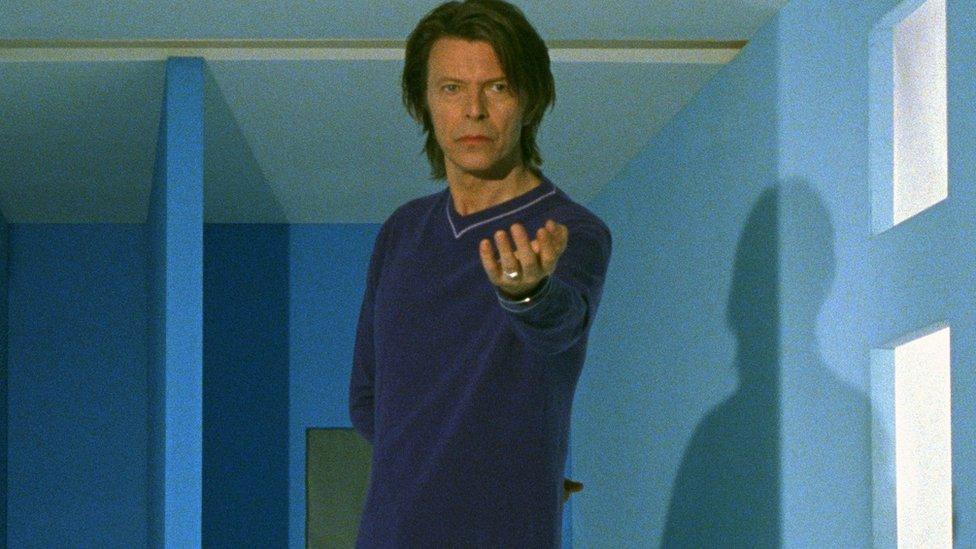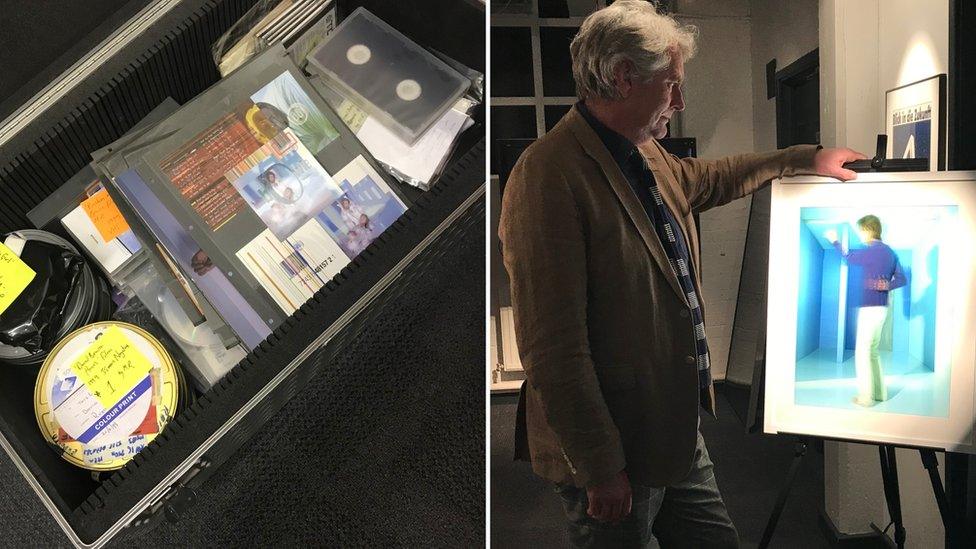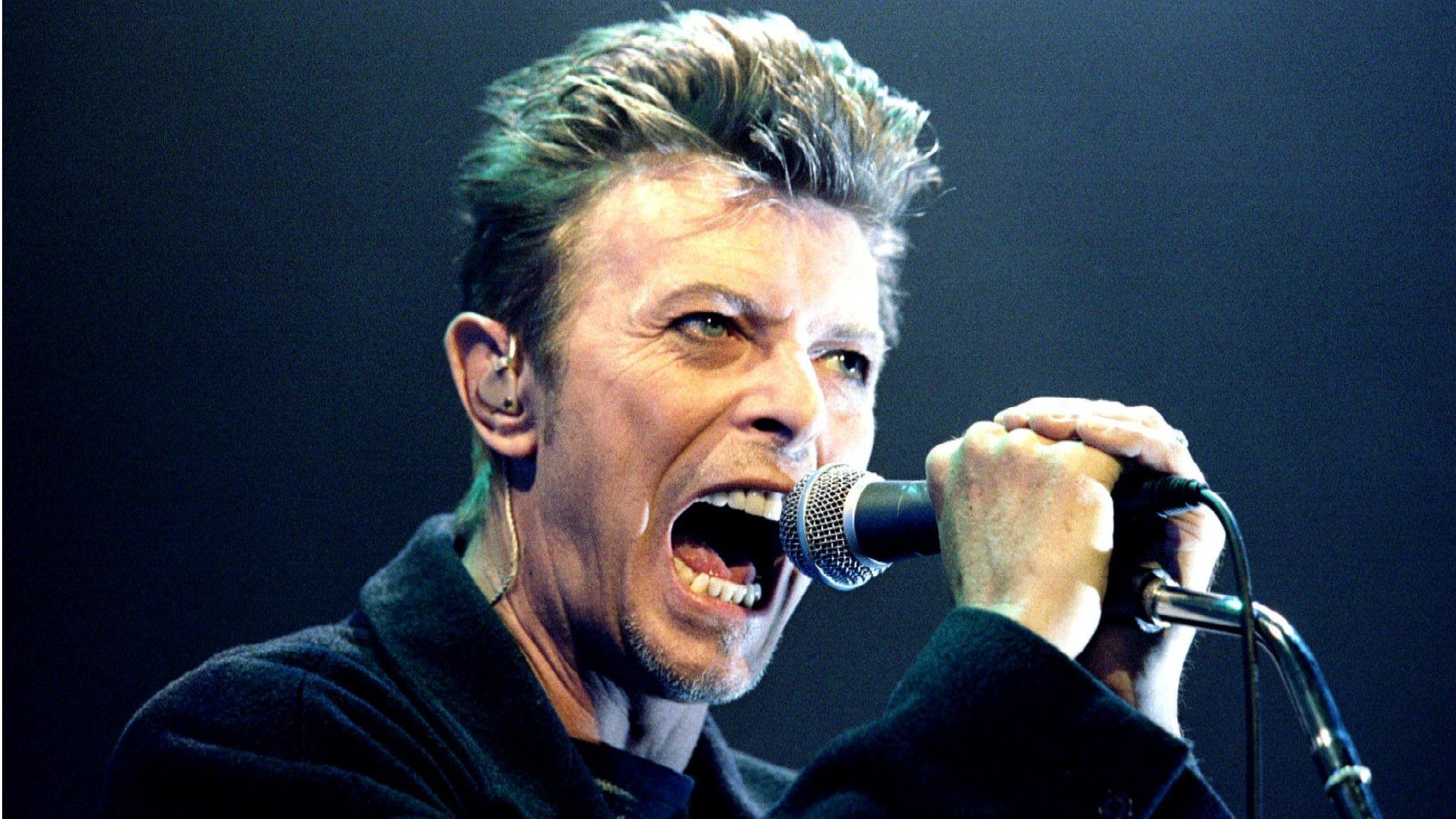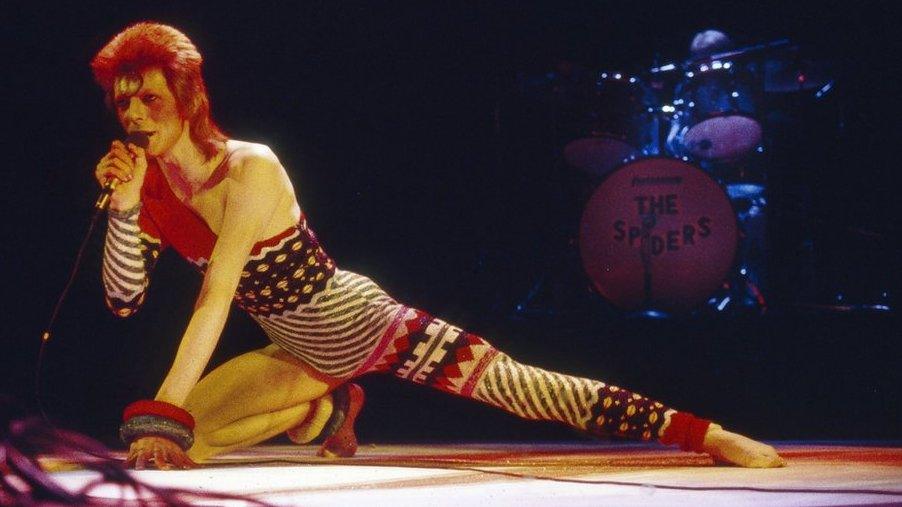David Bowie: Experimental footage to be shown
- Published

The experimental film of Bowie was used to produce a hologram for his 1999 album Hours
Lost footage of David Bowie will be shown for the first time since it was shot in 1998.
The 30 minutes of experimental film had been stored in a chest at Leicester's De Montfort University for many years.
It was shot by friend and collaborator Prof Martin Richardson, who used it to produce a hologram for an album insert.
The film will be played to 300 Bowie fans on Friday, and comes as the music world marks four years since his death.
The footage is of the Ziggy Stardust performer walking towards the camera, doing various poses.
Prof Richardson used the 35mm film to create a moving hologram of Bowie, which featured as an insert in his 1999 album Hours.
The holography academic went to New York to film Bowie in his studio.

The 30 minutes of 35mm film was shot for a hologram produced by Prof Martin Richardson
Prof Richardson, who first met the star in 1994, recalled: "Bowie said to me, 'When you've done your bloody hologram it will be up and down the width and breadth of the country. I am going to make you famous.'
"He got back on the sound stage and said, 'Right, what do you want me to do?' and I thought, 'I am going to direct David Bowie, the super rock star I idolised as a boy."
The hologram was then reproduced for 500,000 copies of the album.
The 30 minutes of footage has been turned into a short digital recording.
It will be shown to 300 Bowie fans at Leicester's National Space Centre on Friday.
Bowie, one of the most influential musicians of his era, died in January 2016 aged 69. He had cancer.
Shortly before his death, the artist released his final album Blackstar, which was loaded with symbolism of his own mortality.

Follow BBC East Midlands on Facebook, external, Twitter, external, or Instagram, external. Send your story ideas to eastmidsnews@bbc.co.uk, external.
- Published11 January 2016

- Published11 January 2016
